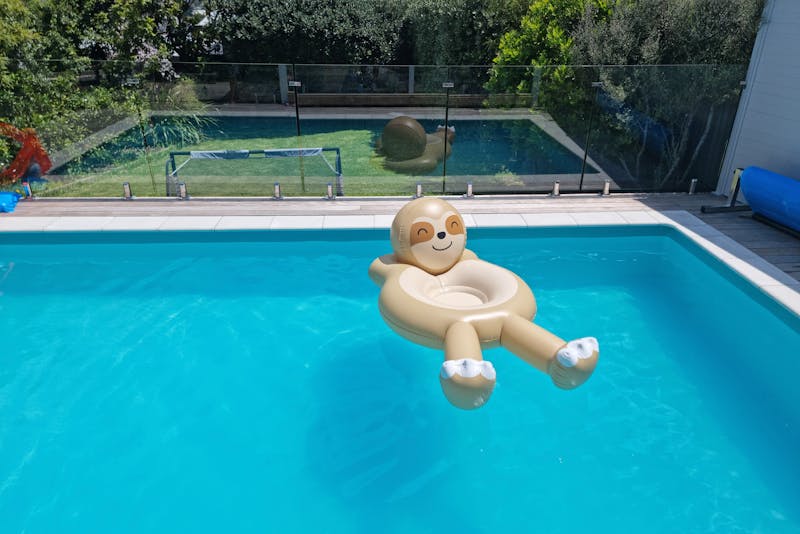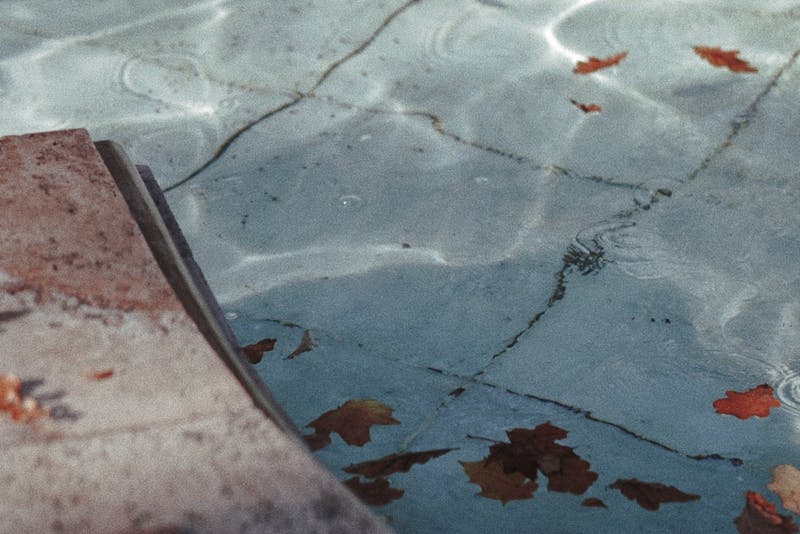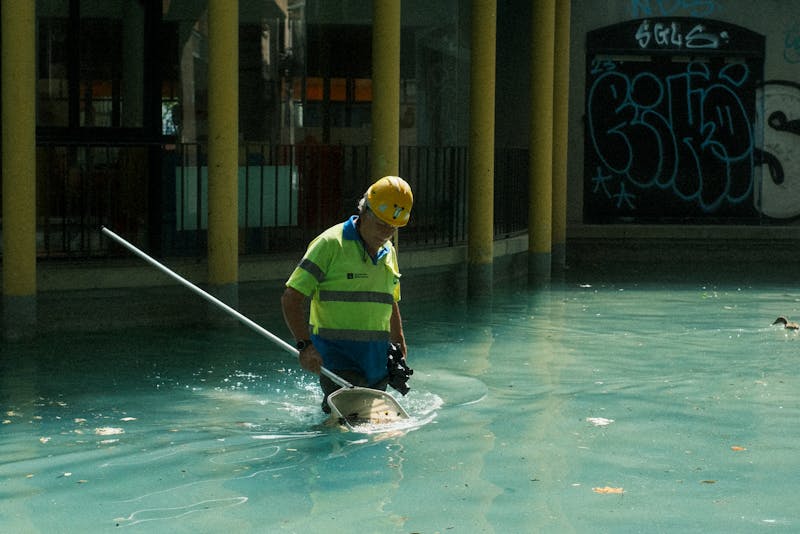
Why Is My Pool Cloudy? 10 Common Reasons (and How to Fix Each One Fast)
Meta Title: Why Is My Pool Cloudy? Causes, Fixes, and Prevention Tips for Homeowners
Meta Description: Find out why your pool is cloudy, the top 10 causes, and how to fix cloudy pool water fast. Here’s a complete guide on water chemistry, filtration, and maintenance.
- Cloudy pool water is usually caused by issues with filtration, circulation, or water chemistry, and most problems can be fixed quickly with proper maintenance.
- Imbalanced pH, alkalinity, and chlorine levels are the top chemical-related reasons for cloudy water and should be checked first.
- Dirty or worn-out filter media and poor circulation often prevent debris and microscopic particles from being removed efficiently.
- Early-stage algae growth and organic contaminants like pollen, sunscreen, and sweat can cloud pool water even if algae is not visibly green yet.
- Environmental factors such as storms, pollen, dust, and nearby landscaping can introduce particles that overwhelm the pool’s filtration system.
- Regular testing, proper filtration, brushing, skimming, and seasonal adjustments are essential for preventing cloudy water in the long term.
Cloudy pool water is one of the most common frustrations homeowners face during pool season. Even if you maintain your pool regularly, there may be times when the water looks hazy, milky, or dull. Cloudiness is more than just an eyesore—it can be a sign that something isn’t right with your water chemistry, filtration system, or maintenance routine.
Fortunately, most causes of cloudy pool water are easy to diagnose and fix with a few simple steps. This detailed guide explores the top 10 reasons behind cloudy water and offers straightforward solutions you can implement immediately.
1. Poor Water Circulation and Filtration
A healthy pool relies on proper water movement. When circulation slows down or the filtration system isn’t pulling enough debris, cloudiness can develop quickly. Pool filters trap dirt, oils, pollen, and microscopic particles that otherwise stay suspended in the water. Over time, filters become clogged, pumps wear down, and water stops flowing at the rate needed to stay clear. Before assuming a chemical issue, always check your pump and filtration first.
How to Fix It Fast
- Clean or backwash your filter, depending on the type.
- Ensure your pump runs at least 8 to 12 hours per day during heavy-use seasons.
- Check for blockages in skimmer baskets and pump strainers.
- Verify that your return jets are angled to create circular movement.
- If the filter is old or damaged, consider replacing the media or entire unit.
2. Incorrect pH Levels
Water chemistry plays a major role in clarity. If your pH levels drift outside the recommended range (7.2 to 7.6), it can cause minerals to precipitate, irritate skin, and make sanitizers less effective. High pH is one of the biggest causes of cloudy pool water because it reduces chlorine’s ability to neutralize contaminants. On the other hand, low pH can corrode equipment and still contribute to haziness.
How to Fix It Fast
- Test your water using test strips or a liquid test kit.
- Add pH reducer (sodium bisulfate or muriatic acid) to lower the high pH.
- Add pH increaser (sodium carbonate) to raise low pH.
- Retest after 4 to 6 hours to make sure your adjustments worked.
3. Low or Ineffective Chlorine Levels
Chlorine is essential for sanitizing pool water. When levels drop too low, bacteria, algae spores, sunscreen, and organic debris accumulate. Even if you don’t see visible algae, the early stages of algae growth can cause a light haze. High swimmer load, sun exposure, and rainstorms can all reduce chlorine effectiveness. If the water looks cloudy and smells slightly musty, a chlorine imbalance is likely the cause.
How to Fix It Fast
- Shock the pool with chlorine or a non-chlorine oxidizer.
- Maintain free chlorine levels between 1 and 3 ppm.
- Add cyanuric acid (stabilizer) to protect chlorine from UV rays.
- Check total chlorine to ensure chloramines aren’t building up.
4. High Calcium Hardness
Calcium hardness influences how minerals behave in pool water. When calcium levels rise above 400 ppm, the water becomes oversaturated. This causes calcium to fall out of solution, leaving the water looking cloudy or chalky. Hard water regions especially struggle with calcium balance. You may also notice scale buildup on pool walls or equipment when hardness levels are too high.
How to Fix It Fast
- Dilute the pool with fresh water to lower the hardness.
- Avoid using calcium-based chlorine products.
- Maintain a recommended range of 200 to 400 ppm.
- For chronic issues, consider installing a water softening system for the fill line.
5. Algae Growth in Its Early Stages
Algae is one of the most common sources of cloudy water. Before algae turns your pool green, it often starts as a barely visible cloudiness or dullness. Warm weather, sunlight, and low sanitizer levels provide ideal conditions for algae to multiply quickly. Even if you don’t see green patches yet, cloudy water is often the first warning sign.
How to Fix It Fast
- Add an algaecide suitable for your pool type.
- Shock the pool heavily to kill invisible spores.
- Brush walls and floors to remove algae film.
- Run the filter continuously until the water clears.
- Prevent future outbreaks by maintaining correct chlorine levels.
6. Debris and Organic Contaminants

Leaves, pollen, sweat, sunscreen, hair products, and even rainwater can cloud your pool. Organic matter reacts with chlorine, consuming it and leaving behind particles that float in the water. During peak allergy seasons, pollen can accumulate rapidly and overwhelm the filtration system.
How to Fix It Fast
- Skim the surface daily to remove floating debris.
- Vacuum the pool bottom to eliminate dirt buildup.
- Encourage swimmers to rinse off before entering.
- Shock the pool after heavy usage or storms.
7. Cloudy Pool Water After Shocking
Many homeowners are surprised to find cloudy water right after shocking the pool. This is actually common and is often caused by temporary chemical reactions. When chlorine oxidizes contaminants, it creates byproducts that may float in the water until the filter removes them. High pH, high alkalinity, and high calcium levels can also contribute to post-shock cloudiness.
How to Fix It Fast
- Run your pump continuously for 24 to 48 hours after shocking.
- Use a pool clarifier to bind tiny particles together.
- Use a flocculant if you want faster results and are willing to vacuum manually afterward.
- Test and adjust pH and alkalinity to proper levels before shocking next time.
8. High Total Alkalinity
Total alkalinity stabilizes pH levels, but too much alkalinity can throw your chemistry off balance. When alkalinity rises above 120 ppm, the water becomes prone to cloudiness and scaling. You may also notice fluctuating pH levels that are difficult to control. High alkalinity often comes from overuse of pH increasers or from naturally alkaline source water.
How to Fix It Fast
- Add muriatic acid or dry acid to bring alkalinity back into range.
- Test levels frequently until you reach 80 to 120 ppm.
- Improve circulation to help chemicals disperse evenly.
- Avoid over-correcting by adding small amounts of chemicals at a time.
9. Dirty or Worn-Out Filter Media
The filter media inside your system are responsible for capturing microscopic contaminants. Over time, sand filters become smooth, cartridge filters clog, and DE filters lose efficiency. If the filter media is old or hasn’t been cleaned properly, it may no longer trap fine particles, leaving your water looking dull or hazy.
How to Fix It Fast
- Replace sand every 3 to 5 years.
- Clean cartridge filters with a specialized filter cleaner.
- Recharge DE filters with fresh diatomaceous earth after backwashing.
- Inspect for cracks or damage in filter components.
10. Environmental Factors
Sometimes the source of your cloudy water isn’t inside the pool at all. Weather events, nearby construction, landscaping work, and increased foot traffic can all introduce fine particles into your pool. Dust, fertilizer overspray, or airborne pollutants can overwhelm your filtration system. Seasonal changes often bring spikes in organic matter that settle in the water.
How to Fix It Fast
- Cover the pool when not in use, especially during storms.
- Trim nearby trees to reduce debris.
- Keep landscaping chemicals far from the pool area.
- Increase pump runtime during windy or high-pollen seasons.
11. Cloudy Water Caused by Excess Pool Chemicals
Adding too many chemicals at once can lead to cloudy pool water, especially when products like stabilizers, clarifiers, calcium-based chlorine, or algaecides exceed recommended limits. Overdosing often causes particles to bind together or minerals to fall out of solution, leaving the water looking milky or hazy. This issue is common when homeowners try to “fix everything at once,” adding shock, pH adjusters, and clarifiers in quick succession. The water becomes oversaturated, and the filtration system struggles to remove the excess.
Before adding more chemicals, always test your levels and follow the manufacturer’s dosing instructions carefully.
How to Fix It Fast
- Stop adding chemicals until readings return to normal.
- Use test strips or a liquid test kit to identify imbalances.
- Run the pump continuously to help filter out excess products.
- Dilute the pool with fresh water if chemical levels are extremely high.
- Adjust one parameter at a time to avoid overdosing in the future.
How to Prevent Cloudy Pool Water in the Future

Keeping your pool clear requires a consistent maintenance routine. By addressing mechanical issues, monitoring water chemistry, and managing environmental factors, you can prevent cloudiness before it starts.
Long-Term Prevention Tips
- Test your pool water at least twice a week.
- Keep chlorine, pH, and alkalinity within recommended ranges.
- Clean your filter regularly to maintain peak performance.
- Shock the pool weekly during summer or after heavy usage.
- Maintain strong circulation by running the pump daily.
- Use a quality pool cover during off-hours.
A proactive approach is the easiest way to enjoy a sparkling, healthy pool all season long.
Conclusion
Cloudy pool water can be frustrating, but it’s rarely a sign of severe damage. Most causes are simply related to imbalanced chemistry, clogged filters, or environmental buildup. By understanding the most common reasons for cloudy water and applying the quick-fix solutions provided in this guide, homeowners can restore clarity quickly and prevent future issues. With consistent testing, proper filtration, and good maintenance habits, your pool can stay crystal clear from opening day to the end of the season.

